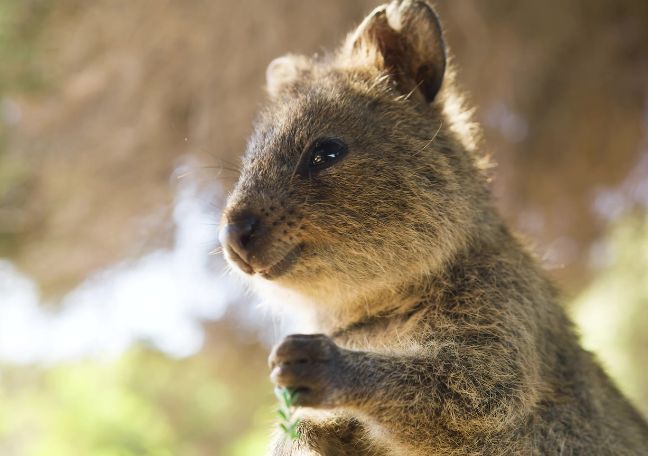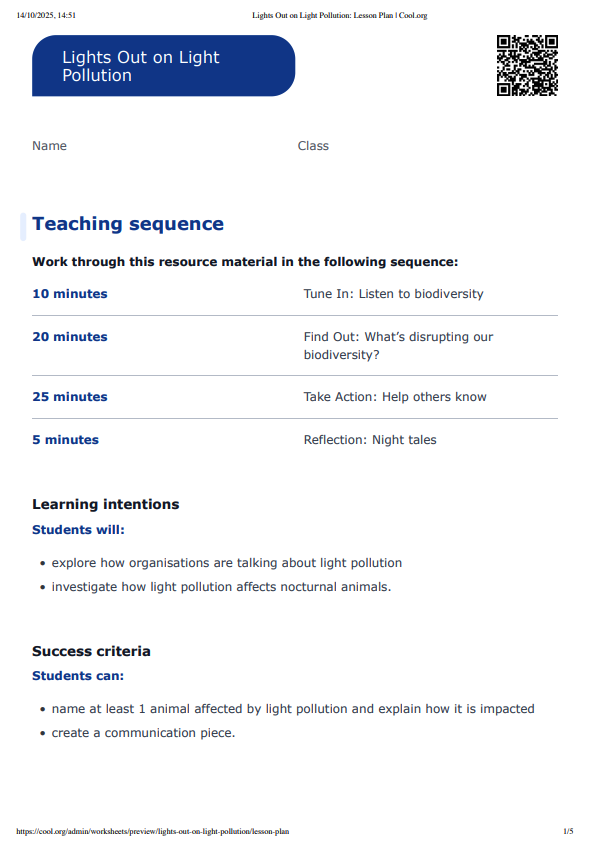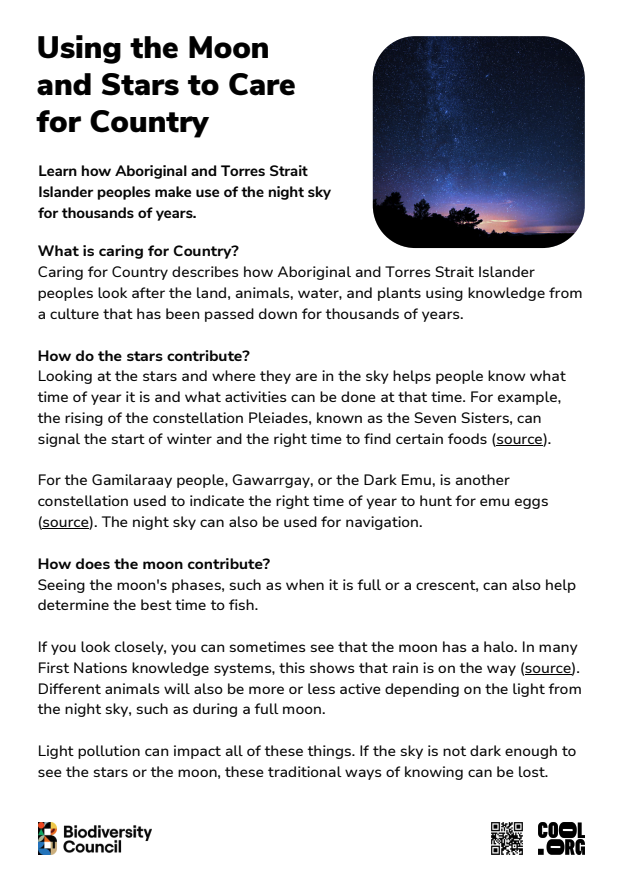Lesson summary
Students will learn how light pollution affects nocturnal animals and their local habitats by creating a communication piece based on information they have viewed and read.
Learning intentions
Students will:
- explore how organisations are talking about light pollution
- investigate how light pollution affects nocturnal animals.
Success criteria
Students can:
- name at least 1 animal affected by light pollution and explain how it is impacted
- create a communication piece.
Lesson guides and printables
Curriculum links
Select your curriculum from the options below.
Lesson details
Skills
This lesson is designed to build students’ competencies in the following skills:
- creative thinking
- collaboration
- communication
- community engagement
Curriculum Mapping
Australian Curriculum (v9.0) content description:
Foundation
Students learn:
- the features of familiar places they belong to, why some places are special and how places can be looked after (AC9HSFK03).
Year 1
Students learn:
- the natural, managed and constructed features of local places, and their location (AC9HS1K03).
Year 2
Students learn:
- how places can be spatially represented in geographical divisions from local to regional to state/territory, and how people and places are interconnected across those scales (AC9HS2K03).
Relevant parts of Foundation achievement standards: Students recognise the features of familiar places, why some places are special to people and the ways they can care for them.
Relevant parts of Year 1 achievement standards: Students identify the location and nature of the natural, managed and constructed features of local places, the ways places change, and how they can be cared for by people.
Relevant parts of Year 2 achievement standards: Students identify that places can be spatially represented in different geographical divisions.
NSW Syllabus outcomes: Stage 1
A student:
- describes features of places and the connections people have with places (GE1-1)
- identifies ways in which people interact with and care for places (GE1-2).
General capabilities: Critical and Creative Thinking, Digital Literacy, Ethical Understanding, Literacy
Cross-curriculum priority: Aboriginal and Torres Strait Islander Histories and Cultures, Sustainability
Level of teacher scaffolding: High - support summarising information
UN Sustainable Development Goals
Target 4.7: By 2030, ensure that all learners acquire the knowledge and skills needed to promote sustainable development, including, among others, through education for sustainable development and sustainable lifestyles, human rights, gender equality, promotion of a culture of peace and non-violence, global citizenship and appreciation of cultural diversity and of culture’s contribution to sustainable development.
Resources Required
- device capable of displaying audiovisual material
- Factsheet - Understanding the Moon and Stars to Care for Country
- material to create communication pieces (eg poster paper or recording equipment)
- whiteboard for recording discussion responses
Additional Info
This lesson was created in collaboration with The Biodiversity Council.
Special thanks to our content partner, The Conversation and to The Garry White Foundation, The Hugh D. T. Williamson Foundation, Wedgetail and The James Kirby Foundation for their generous financial support.
Related Professional Learning
Beginning to Include First Nations Peoples' Perspectives in Your Classroom
Quick summary: This course aims to inform and upskill educators in incorporating Aboriginal and Torres Strait Islander peoples' perspectives.



Welcome back!
Don't have an account yet?
Log in with:
Create your free Cool.org account.
Many of our resources are free, with an option to upgrade to Cool+ for premium content.
Already have an account?
Sign up with:
By signing up you accept Cool.org's Terms and Conditions(Opens in new tab) and Privacy Policy(Opens in new tab).